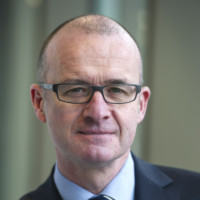
To protect its service proposition, whole-of-market distribution is still a way off, but McCormack admits that restricted access to TSB’s products is an issue. “When are we going whole-of-market, is a question I get asked internally all the time. Naturally we want to be but I won’t commit to a date because it is difficult to see what the market is going to be like this year.”
Despite its current distribution restrictions, McCormack firmly believes TSB has the potential to threaten the cosy status quo of the established banking players.
“When you step back and look at it we are the only sizable lender which has entered the market in the last 10 years and done it successfully.”
TSB launched to the intermediary market in January 2015, after rejoining the high street in September 2013. In the first six months of operation in the broker market it advanced £665m of gross lending while receiving mortgage applications of £1.9bn.
McCormack is frank about the complacency which has grown among the established banks because of the lack of new lenders with any real scale.
“What we saw from 2009 onwards was the top six controlling the market, a lack of service to intermediaries and lack of innovation. TSB coming to the market has meant the big guys have had to raise their game.”
HSBC is the lender on TSB’s radar as the bank with real scale which could shake-up the market, Williams & Glyn’s potential, says McCormack, is uncertain. “It could be a competitor, but I haven’t see the size of its balance sheet. We are unique in that we had more savings than lending, so we could provide scale mortgages quickly because we needed to use those savings. It will be interesting to see if Williams & Glyn is in the same position as us. Part of the reason we had that spare capacity was because we didn’t have the intermediary arm.”
Higher up the list of priorities than wider distribution is the expansion of its product range. McCormack says the bank has enjoyed unexpected success in the new-build sector and for that reason it plans to open up more of its mortgages to new-build borrowers. He refutes the argument that it is difficult for challengers to make any headway in the new-build sector because Halifax and Nationwide have a stranglehold on the market and brokers’ loyalty.
“I would fundamentally disagree with that. I think that’s an excuses and avoids the real reasons why brokers fail to engage with them.” McCormack says while this wasn’t an area TSB intended to focus on, it got great initial feedback on the value of being able to speak to a specialist underwriter who understood the product, criteria and the speed of offer.
McCormack was instrumental in choosing his mortgage team and micro-managed performance in the early months to guarantee consistently high service. “In new build, if you can deliver on the service consistently then you can gain decent market share. The only thing stopping us having a bigger market share is our criteria.”
He denies restricted distribution is giving TSB an unfair advantage in the service stakes. “It’s about having a clear proposition when you launch which everyone buys into, from the chairman to person who answers the telephone.”
TSB is also keen to bring in more products similar to its 10-year fix and flex range where the borrower has the opportunity to buy into a low rate without being tied in by an early repayment charge.
There are areas TSB is not interested in treading, for now at least. Limited company buy-to-lets will not be an addition to its range. He says every lender will be looking at limited companies as a matter of good practice but from experience, he knows it is fundamentally different than lending to an individual. “There is still an active market for the amateur landlord and there will still be a decent market for lenders like us.”
Foreign currency mortgages, he admits, is not one for TSB. “This is an unintended consequence of the Mortgage Credit Directive. Given that it’s a small part of our business, to change our processes and systems and train our people can’t be justified – reluctantly we have taken this decision.”
A work-in-progress project is the bank’s intention to pay brokers for retention business. Ahead of broker-originated mortgages coming up for renewal from January 2017 onwards, the challenger bank has begun to look at an IT solution which will allow it to pay brokers a fee for retained business.
Unsurprisingly McCormack won’t be drawn on mortgage lending targets for 2016. “We will continue to be a major player in intermediary mortgages.”
Roland McCormack – a brief biography and quick-fire question round
Proudest career moment?
Being offered the opportunity to build and create a team from scratch that has delivered on its promises to brokers – I couldn’t be prouder.
Biggest challenge ahead?
Staying ahead of the competition. This is no time to be complacent, we might be a year in but we’re just getting started.
If you were Prime Minister for the day, what would be your first policy change?
I would get large American IT companies to pay their fair share of tax and use the money to fund better mental healthcare for young adults.
What’s the best present you’ve ever given?
I surprised my wife by compiling a book of family photos for her including our favourite memories from across the years.

















